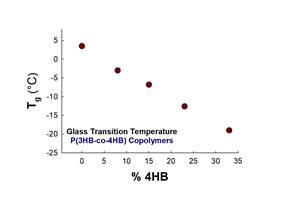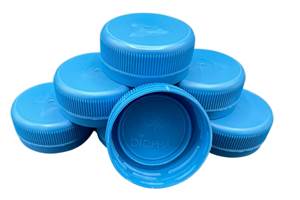From Paper-Mill Sludge to Plastic Decking
Kadant Composites’ self-appointed mission for the past eight years has been to find commercial uses for paper sludge, a soggy mix of short cellulose fibers, calcium carbonate, and clay that is the copious byproduct of paper recycling.
Kadant Composites’ self-appointed mission for the past eight years has been to find commercial uses for paper sludge, a soggy mix of short cellulose fibers, calcium carbonate, and clay that is the copious byproduct of paper recycling. A big mill processing 600 tons/day of recycled paper produces 150 tons of sludge that it needs to get rid of. Who would have thought that gunk could be the key to a line of attractive outdoor decking?
Kadant Composites in Bedford, Mass., was formerly Thermo Fibergen, a unit of Thermo Fibertek, which belonged to the conglomerate Thermo Electron and built machinery for paper recycling. Fibertek understood the scale of the sludge problem—10 million tons generated annually in North America. Finding uses for that sludge became a pet project at Fibertek. Burning it for energy wasn’t an option because the mineral content was too high.
In 1996, Fibertek set up Fibergen to help paper recyclers get rid of their sludge. The idea was for Fibergen to build a plant next to a recycled paper mill, process the sludge for a tipping fee, and then find customers for it. This approach never got beyond the first sludge processing plant in the Midwest because it required paper mills to commit to long-term disposal contracts, which most weren’t willing to do. But just one plant gave Fibergen more than enough sludge to work with.
Fibergen bought and adapted a process to de-water and dry the sludge into small granules, which Fibergen patented and named Biodac. Then Fibergen hired Harvard professor Anatole Klyosov to look for ways to separate the cellulose from the minerals. What he came up with instead were applications that utilized Biodac’s ability to soak up liquids like a sponge.
One early use was non-dusting kitty litter. Fibergen also soaked Biodac in a diluted salt solution for use as a sidewalk de-icer. But the biggest success was a delivery vehicle for agricultural chemicals. Biodac soaks up liquid fertilizers and can be scattered on fields, where it decomposes and provides slow release into the soil. As an inert carrier for pesticides, it’s non-dusting, which makes it safer for farm workers.
Soaking up plastic
The idea of using the smallest Biodac granules as a filler for plastics came almost by accident, says Klyosov, who had no direct experience in plastics processing. A co-worker ran into someone researching plastic composites who suggested trying Biodac as a filler. It made sense. The little granules contain many of the same fillers—calcium carbonate, clay, and cellulose fibers—that plastic compounders use, but typically not all at the same time.
“Under a microscope, Biodac looks like rocks wrapped in string,” Klyosov notes. It has 1.58 g/cc density vs. around 2.8 g/cc for plain calcium carbonate.
Biodac proved to be a better filler than expected. Because the granules are porous, they soak up plastic resin and bond well to it. “When you put the smallest size of Biodac in plastic, you get a kind of physical crosslinking, not chemical,” says Klyosov. Unlike wood fibers, which are loaded with lignin and tannin that inhibit resin bonding, Biodac is low in those chemicals, which are removed in paper making. So a compound with Biodac doesn’t need coupling agents, though they can help.
Kadant developed GeoDeck deck profiles, hollow tongue-in-groove boards of HDPE with up to 30% Biodac plus additional fiber from rice hulls. The composites end up being roughly one-third plastic, one-third mineral, one-third fiber. Kadant could use up to 70% Biodac, but such a high level is too abrasive for the extruders. Whiteners and brighteners from the paper boost the effect of colorants in GeoDeck, making it less subject to fading than wood-plastic composites.
In 2000, Fibergen set up a production plant in Green Bay, Wis., with nine lines to produce GeoDeck. In 2001, Fibertek separated from Thermo Electron and was renamed Kadant, while the Fibergen subsidiary became Kadant Composites. In 2001, GeoDeck sales were under $2 million. They grew to $9 million in 2002, $12.5 million in 2003, and are expected to top $15 million this year.
Kadant Composites has developed new building products containing Biodac, including corrugated roof tiles that look like red clay, and flat, square tiles that resemble slate. Kadant hasn’t run out of ideas for Biodac, and it certainly can’t outgrow the supply of the patented filler to make them.
Related Content
Film Extrusion: Boost Mechanical Properties and Rate of Composting by Blending Amorphous PHA into PLA
A unique amorphous PHA has been shown to enhance the mechanical performance and accelerate the biodegradation of other compostable polymers PLA in blown film.
Read MorePHA Compound Molded into “World’s First” Biodegradable Bottle Closures
Beyond Plastic and partners have created a certified biodegradable PHA compound that can be injection molded into 38-mm closures in a sub 6-second cycle from a multicavity hot runner tool.
Read MoreShredding Thin Film: How to Do It Right
While many processors recoil at this task, a little know-how in shredding equipment, processing, and maintenance should add the necessary confidence.
Read MoreImpacts of Auto’s Switch to Sustainability
Of all the trends you can see at NPE2024, this one is BIG. Not only is the auto industry transitioning to electrification but there are concerted efforts to modify the materials used, especially polymers, for interior applications.
Read MoreRead Next
Lead the Conversation, Change the Conversation
Coverage of single-use plastics can be both misleading and demoralizing. Here are 10 tips for changing the perception of the plastics industry at your company and in your community.
Read MoreBeyond Prototypes: 8 Ways the Plastics Industry Is Using 3D Printing
Plastics processors are finding applications for 3D printing around the plant and across the supply chain. Here are 8 examples to look for at NPE2024.
Read More


















